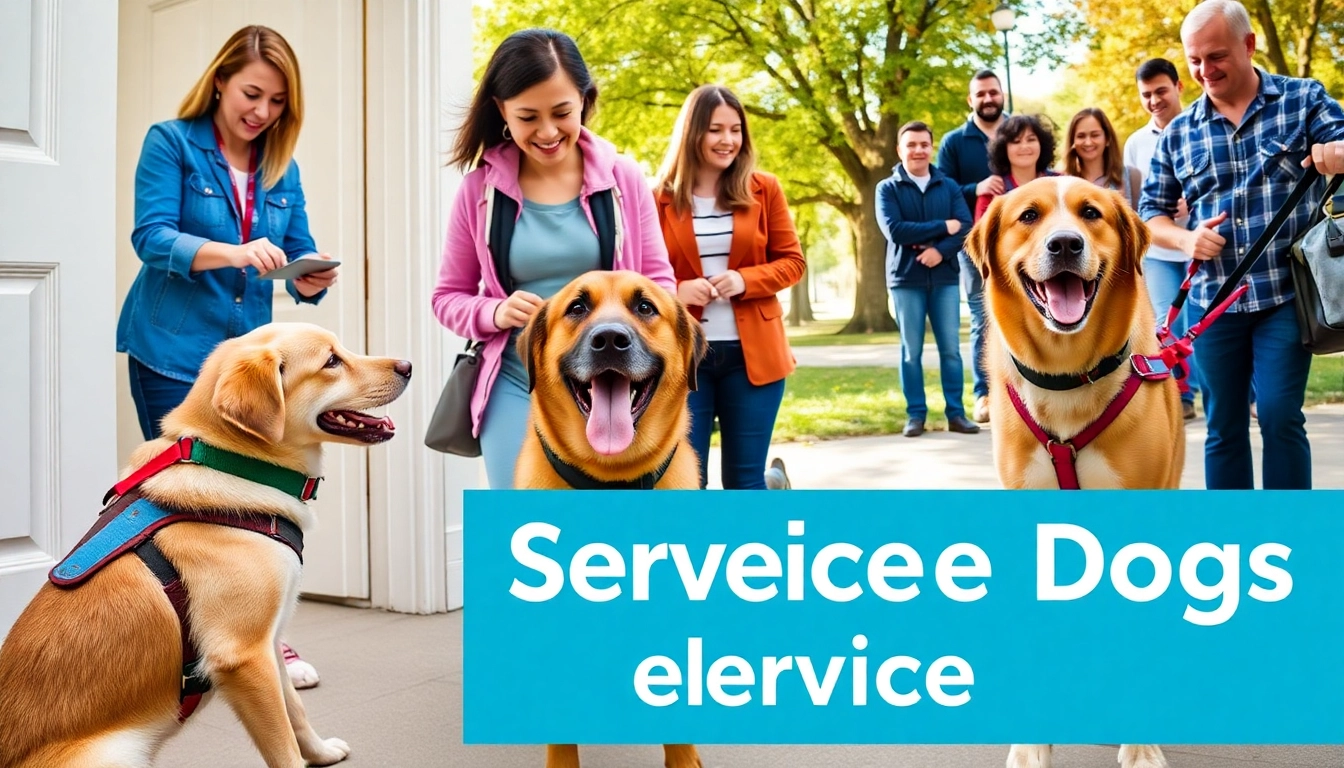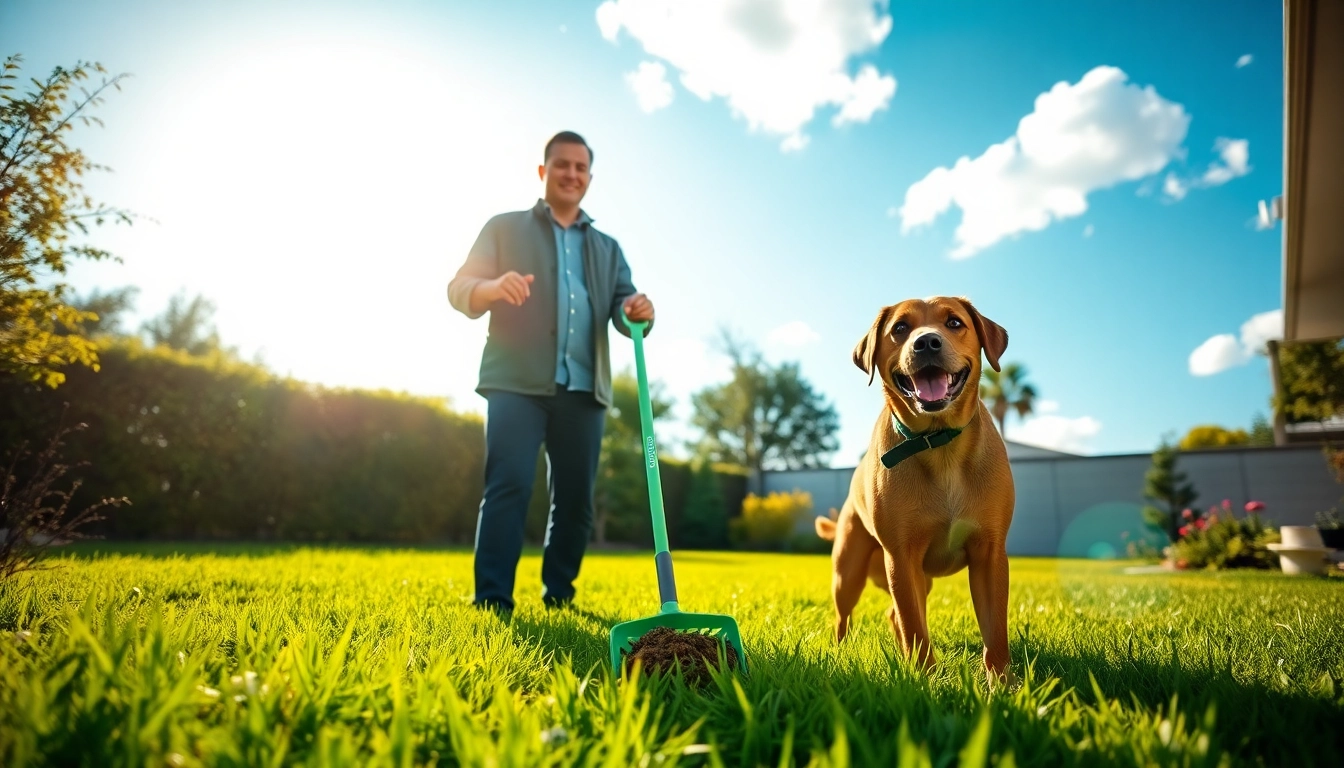What are Service Dogs?
Definition and Purpose of Service Dogs
Service dogs are specially trained canines that assist individuals with disabilities by performing specific tasks that help these individuals navigate everyday life. Unlike emotional support animals or therapy dogs, service dogs are trained to perform functions directly related to the handler’s disability. This specialized training allows them to provide critical support, enhancing the quality of life for their partners. They play an essential role in enabling individuals to remain independent and gain access to various environments where they might otherwise face challenges.
For a detailed exploration of how service dogs can assist those in need, it is vital to understand their definitions, legal standing, and operational parameters.
Types of Disabilities Supported by Service Dogs
Service dogs can assist individuals with a wide range of disabilities, including but not limited to:
- Mobility Impairments: These dogs are trained to aid individuals with physical disabilities, such as guiding those with limited mobility, retrieving dropped items, and providing stability when walking.
- Vision Impairments: Guide dogs are a specific type of service dog trained to assist blind or visually impaired individuals by navigating obstacles and enhancing their independence.
- Hearing Impairments: Hearing dogs alert individuals to important sounds, such as doorbells, alarms, or the calls of their names, effectively helping those who are deaf or hard of hearing communicate better with their environment.
- Psychiatric Disorders: Service dogs can also assist individuals with conditions like PTSD, anxiety, and depression. These dogs provide therapeutic support through companionship and by performing calming tasks.
- Medical Alerts: Certain service dogs are trained to alert individuals to medical emergencies, such as seizures or diabetic highs and lows, thus providing critical alerts that can save lives.
Legal Regulations Surrounding Service Dogs
In the United States, the Americans with Disabilities Act (ADA) provides a clear definition of service dogs and outlines the legal rights of handlers. Under ADA regulations, only dogs that are specifically trained to perform tasks for individuals with disabilities are recognized as service dogs. Other animals or pets, including emotional support animals, are not granted the same legal access in public spaces. Understanding these regulations is crucial for both service dog handlers and those around them, ensuring respect for their rights while also complying with legal frameworks.
Training and Certification of Service Dogs
Basic Training Requirements for Service Dogs
The training of service dogs typically involves several stages, focusing on basic obedience before moving on to specialized tasks. A well-trained service dog should demonstrate:
- Basic Obedience: Commands such as sit, stay, come, and heel are fundamental, ensuring that the dog can follow commands in various environments.
- Socialization: Service dogs should be comfortable in public spaces and around large groups of people.
- Task-Specific Training: This includes training for specific tasks that directly assist the handler, such as retrieving objects, alerting to sounds, or providing stability during movement.
Certification Processes for Service Dogs
While there is no official registry for service dogs recognized by the government, many organizations provide certification and training programs that validate a dog’s capabilities. Certification often involves a comprehensive evaluation process, ensuring that the dog can perform its designated tasks reliably. However, it is important to note that under the ADA, service dogs are recognized by their training and function rather than by any certification or identification. Handlers can choose to carry documentation but are not required to do so.
Importance of Professional Training Organizations
Engaging with professional training organizations is essential in ensuring that service dogs receive high-quality training. These organizations employ experienced trainers and utilize standardized training protocols that enhance the dog’s effectiveness as a service animal. Furthermore, they often provide ongoing support and resources for handlers, which can be critical in fostering the human-animal bond and ensuring the continued success of their partnership.
Benefits of Having a Service Dog
How Service Dogs Assist with Daily Tasks
Service dogs are invaluable partners for individuals with disabilities. They assist with daily tasks, enabling handlers to maintain autonomy and participate in activities that would otherwise be challenging. Tasks may include:
- Opening doors and retrieving items.
- Guiding individuals through crowded spaces.
- Alerting to important sounds or environmental cues.
- Providing physical support or stability during movement.
The presence of a service dog can transform the handler’s ability to navigate their environment safely and independently.
Emotional Support and Companionship from Service Dogs
Beyond their task-oriented skills, service dogs offer significant emotional support to their handlers. The bond between a service dog and its handler can provide comfort during stressful situations, contribute to a sense of security, and alleviate feelings of loneliness. This companionship plays a critical role in improving mental well-being and contributing positively to the handler’s overall quality of life.
Enhancing Independence with Service Dogs
The independence that comes with having a service dog is profound. Handlers often report feeling more empowered and capable of participating fully in society. With their assistance, individuals can engage in activities such as shopping, traveling, or socializing, often experiencing reduced anxiety and increased confidence. Service dogs bridge gaps for many people, paving the way for a more inclusive and fulfilling lifestyle.
Finding the Right Service Dog
Evaluating Your Needs for a Service Dog
Before acquiring a service dog, prospective handlers should conduct a comprehensive evaluation of their needs. This includes understanding the specific tasks the dog will need to perform and assessing lifestyle factors such as activity levels, living situations, and support systems. Each handler’s needs are unique, and a thoughtful approach helps ensure a successful partnership.
Where to Acquire Service Dogs
Service dogs are typically sourced from specialized training organizations, where they undergo rigorous training programs. These organizations often match dogs to handlers, considering factors such as personality, size, and specific assistance needs. Acquiring a service dog from a reputable training facility ensures that the dog is equipped with the necessary skills to assist their partner effectively.
Considerations for Matching a Service Dog to a Handler
Matching a service dog to a handler involves careful consideration of various elements. Key factors include:
- Size and Strength: The dog should be capable of performing tasks appropriate to the handler’s physical needs.
- Temperament: A calm and trainable temperament is crucial, especially for emotional support and comfort.
- Activity Level: The handler’s lifestyle can dictate the ideal service dog’s energy levels and tendencies.
Engaging with training organizations facilitates a thorough matching process that greatly enhances the likelihood of a successful partnership.
Frequently Asked Questions about Service Dogs
Common Misconceptions about Service Dogs
Many misconceptions surround service dogs, and addressing these is essential for fostering understanding and respect. Common myths include:
- All pets can be considered service animals.
- Service dogs require certification to access public places.
- Handlers should inform the public about their disability.
Dispelling these myths is vital for the acceptance of service dogs as legitimate support companions.
Rights and Responsibilities of Service Dog Handlers
Handlers of service dogs have specific rights under the ADA that grant them access to public spaces and housing. However, these rights come with responsibilities, including keeping the dog well-behaved, managing its health, and ensuring that it is trained to perform necessary tasks. Awareness of these rights and obligations is crucial for both the handler and the public to promote harmonious interactions.
Maintaining a Healthy Relationship with Your Service Dog
Building a healthy relationship with a service dog requires time, patience, and understanding. Key aspects include:
- Consistent training and reinforcement of commands.
- Regular socialization opportunities in varied environments.
- Providing mental and physical stimulation through play and exercises.
Fostering a bond of trust and respect will significantly enhance the working relationship and overall well-being of both the handler and their service dog.


